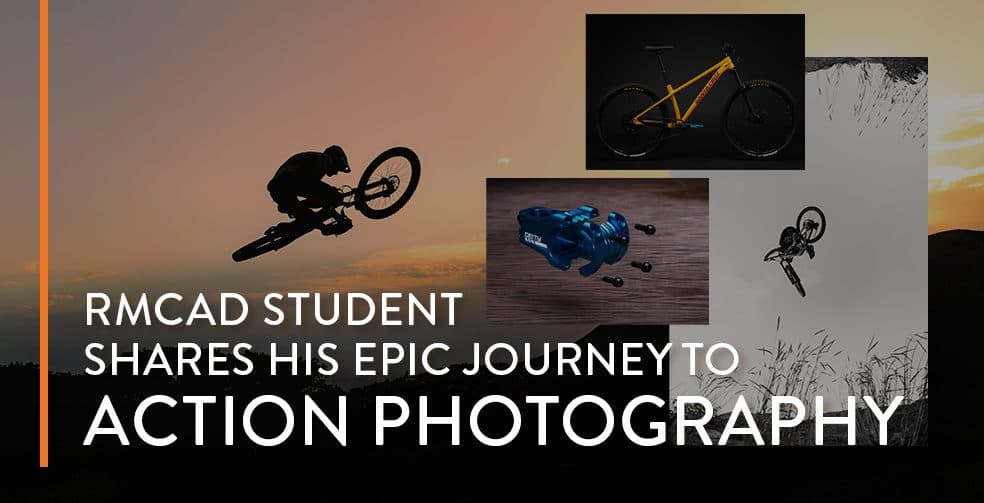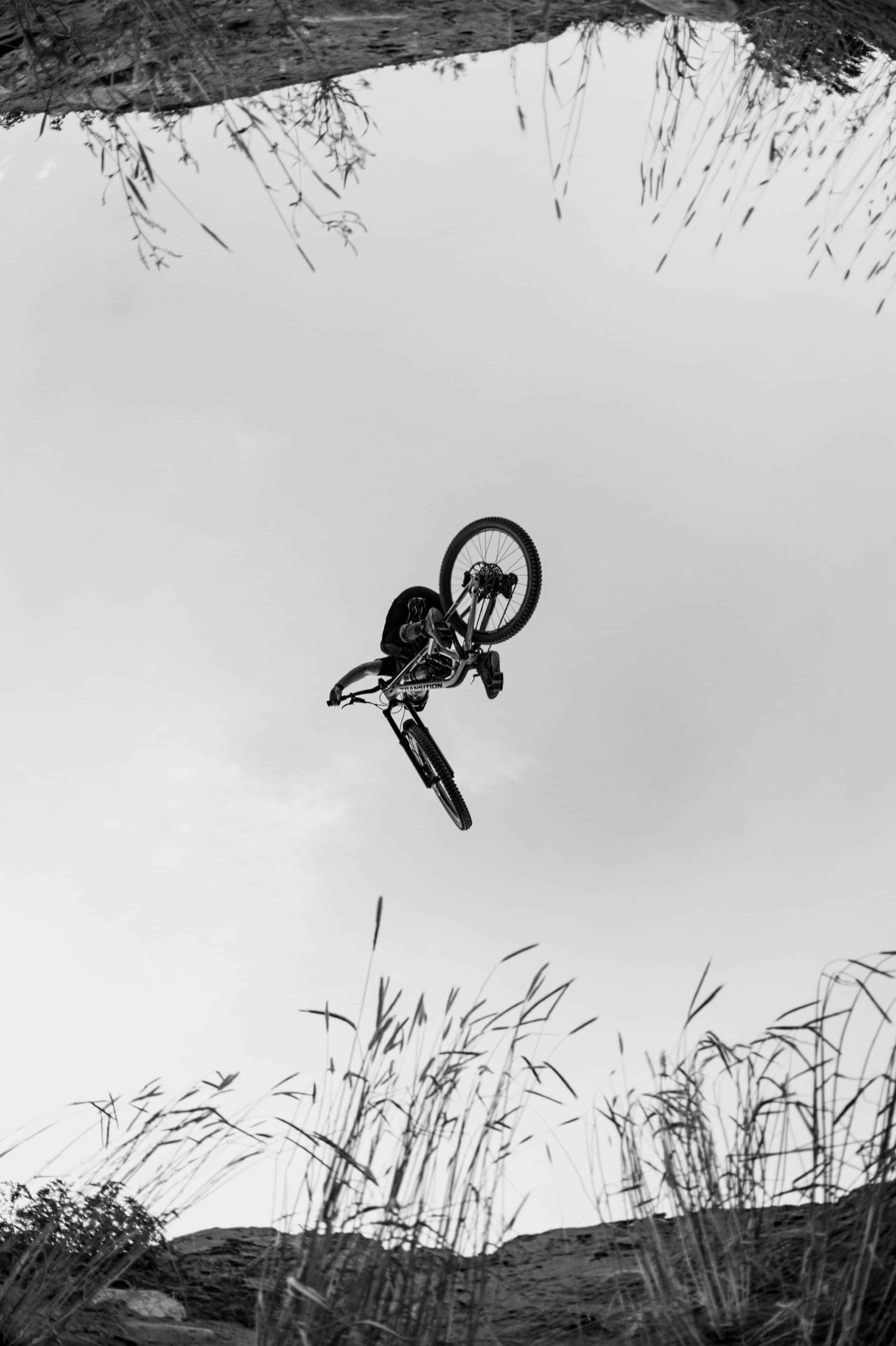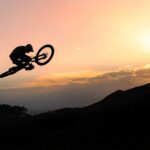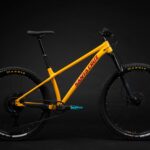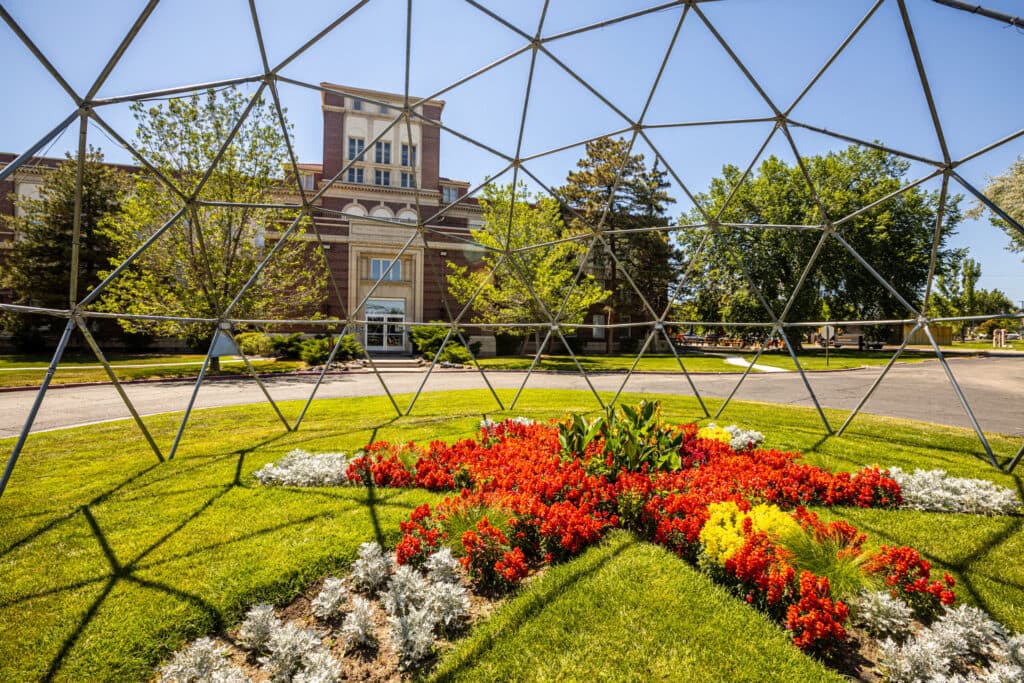As an avid mountain biker, RMCAD photography student, Jace Stephens, finds himself spending a lot of time in the Rocky Mountains. From rough terrains, to high-adrenaline challenges, to technical courses, he has not only discovered his passion for extreme sports, but also for action photography. Like mountain biking, photography presents an exciting challenge for Stephens to take his skills to the next level. We sat down with him to capture all of the details as a photographer and student!
What goes into creating action shots?
Action shots are more in depth than most people think. A studio setting is very detailed and usually pretty static. You are able to move lights around to create the composition that you want, and there isn’t that much camera movement either. When it comes to action shots, especially ones that are in remote locations, you can only use what is with you. Which for me, typically means determining what I can carry on my back as I ride my bike a couple miles out on the trail.
What does the editing process look like for action photography?
When it comes to action, you can be a lot more artistic with your editing and your use of color. However, in a studio setting for a product shoot, the colors need to be more accurate. If you are sending a product photo to a company for their website, the colors need to be accurate with what a customer would see in real life. If the blue doesn’t look like the blue in the photo, it can be a little problematic. In action photos, you can add more stylization to your work, so it’s a little more free and creative in the editing process.
What RMCAD classes have helped you grow as a photographer?
Definitely all of the lighting classes at RMCAD, which have helped change my photography immensely. Lighting I is all studio based, where you learn the basics of how to work lights. Then, Lighting II is location based, which involves shooting outside. You also learn how to use high speed sync, which is something I use regularly with athletes going 20 miles per hour. Lastly, through Lighting III, I was able to focus my time in the studio and created a full portfolio of mountain biking products. RMCAD’s marketing class has also been a huge help to learn the key aspects of running a photography business.
What advice would you give to other photography students?
RMCAD has such a great team of instructors, who have been in the industry for a long time. It’s awesome to be able to pick their brains, ask for advice and hear their insight on similar problems they may have encountered. However, one thing I have noticed is a lot of students get locked into what an instructor says, and either feel discouraged or limit themselves. My advice would be to take your instructor’s feedback, analyze what they are saying, but also put your own style or spin into it. Remember, this is your work, your style and your creation, but also take others feedback into consideration.
To learn more about RMCAD’s photography program, available online and on campus, please visit our academics page.
